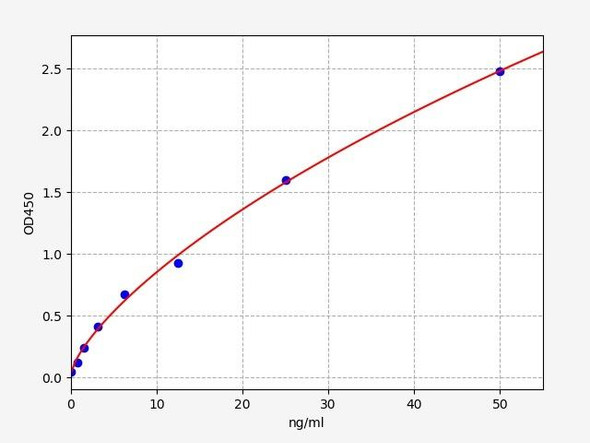| UniProt Protein Function: | CRB1: Plays a role in photoreceptor morphogenesis in the retina. May maintain cell polarization and adhesion. CRB1 mutations have been found in various retinal dystrophies, chronic and disabling disorders of visual function. They predominantly involve the posterior portion of the ocular fundus, due to degeneration in the sensory layer of the retina, retinal pigment epithelium, Bruch membrane, choroid, or a combination of these tissues. Onset of inherited retinal dystrophies is painless, bilateral and typically progressive. Most people experience gradual peripheral vision loss or tunnel vision, and difficulties with poor illumination and night vision. Central vision is usually unaffected, so the person may still be able to read. However, it can also deteriorate to cause total blindness. Examples of retinal dystrophies are retinitis pigmentosa, Leber congenital amaurosis, cone-rod dystrophy among others. Defects in CRB1 are the cause of retinitis pigmentosa type 12 (RP12). A retinal dystrophy belonging to the group of pigmentary retinopathies. Retinitis pigmentosa is characterized by retinal pigment deposits visible on fundus examination and primary loss of rod photoreceptor cells, followed by secondary loss of cone photoreceptors. Patients typically have night vision blindness and loss of midperipheral visual field. As their condition progresses, they lose their far peripheral visual field and eventually central vision as well. RP12 is an autosomal recessive severe form oFTen manifesting in early childhood. Patients experiment progressive visual field loss with severe visual impairment before the age of twenty. Some patients have a preserved paraarteriolar retinal pigment epithelium (PPRPE) and hypermetropia. Defects in CRB1 are the cause of Leber congenital amaurosis type 8 (LCA8). LCA designates a clinically and genetically heterogeneous group of childhood retinal degenerations, generally inherited in an autosomal recessive manner. Affected infants have little or no retinal photoreceptor function as tested by electroretinography. LCA represents the most common genetic cause of congenital visual impairment in infants and children. Defects in CRB1 are the cause of pigmented paravenous chorioretinal atrophy (PPCRA). PPCRA is an unusual retinal degeneration characterized by accumulation of pigmentation along retinal veins. PPCRA is dominantly inherited, but exhibited variable expressivity. Males are more likely to exhibit a severe phenotype, whereas females may remain virtually asymptomatic even in later years. The PPCRA phenotype is associated with a mutation in CRB1 gene which is likely to affect the structure of the CRB1 protein. Belongs to the Crumbs protein family. 4 isoforms of the human protein are produced by alternative splicing.Protein type: Membrane protein, integral; Motility/polarity/chemotaxis; Cell development/differentiationChromosomal Location of Human Ortholog: 1q31.3Molecular Function: protein bindingBiological Process: cell-cell signaling; establishment and/or maintenance of cell polarityDisease: Leber Congenital Amaurosis 8; Pigmented Paravenous Chorioretinal Atrophy; Retinitis Pigmentosa 12 |
| UniProt Protein Details: | |
| NCBI Summary: | This gene encodes a protein which is similar to the Drosophila crumbs protein and localizes to the inner segment of mammalian photoreceptors. In Drosophila crumbs localizes to the stalk of the fly photoreceptor and may be a component of the molecular scaffold that controls proper development of polarity in the eye. Mutations in this gene are associated with a severe form of retinitis pigmentosa, RP12, and with Leber congenital amaurosis. Alternate splicing results in multiple transcript variants, some protein coding and some non-protein coding.[provided by RefSeq, Apr 2012] |
| UniProt Code: | P82279 |
| NCBI GenInfo Identifier: | 302370926 |
| NCBI Gene ID: | 23418 |
| NCBI Accession: | NP_001180569.1 |
| UniProt Secondary Accession: | P82279,Q5K3A6, Q5TC28, Q5VUT1, Q6N027, Q8WWY0, Q8WWY1 A2A308, B7Z5T2, B9EG71 |
| UniProt Related Accession: | P82279 |
| Molecular Weight: | 95,046 Da |
| NCBI Full Name: | protein crumbs homolog 1 isoform 2 |
| NCBI Synonym Full Names: | crumbs 1, cell polarity complex component |
| NCBI Official Symbol: | CRB1 |
| NCBI Official Synonym Symbols: | LCA8; RP12 |
| NCBI Protein Information: | protein crumbs homolog 1 |
| UniProt Protein Name: | Protein crumbs homolog 1 |
| UniProt Synonym Protein Names: | |
| Protein Family: | Protein crumbs |
| UniProt Gene Name: | CRB1 |
| UniProt Entry Name: | CRUM1_HUMAN |






